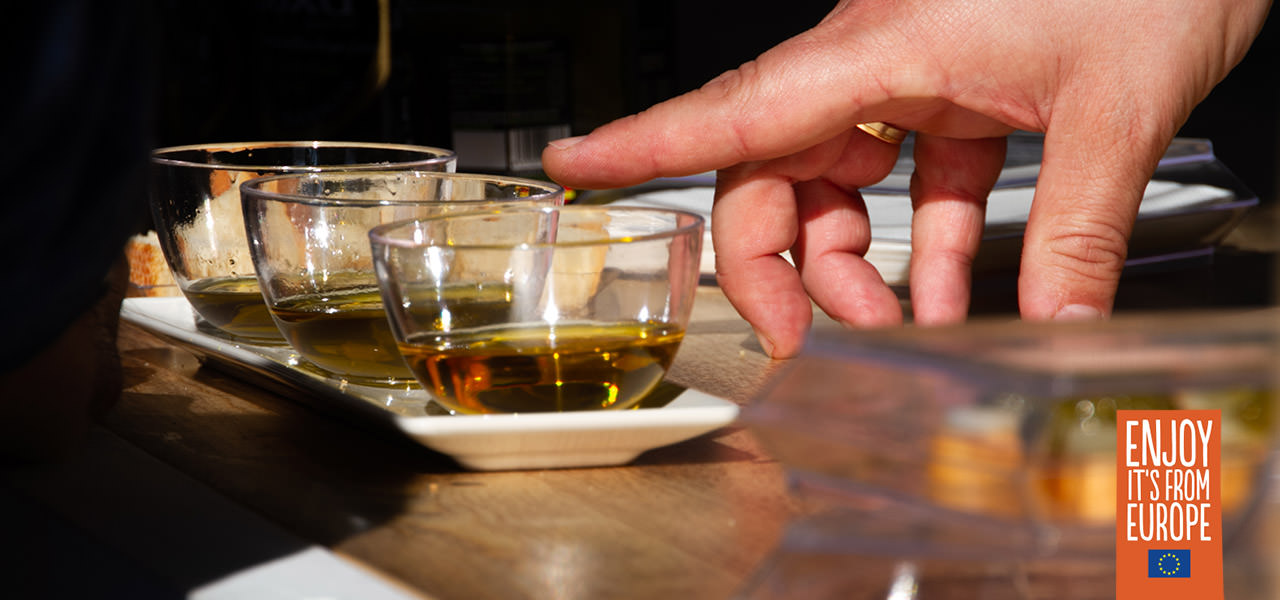
Those who are new to tasting extra virgin olive oil and are unprepared might confuse the spicy or bitter notes with a sensation of acidity. These should not be confused. The bitter, spicy taste should never be missing and, above all, these notes help to establish the quality of the product. They are typical flavours of a green olive in optimal health, tastes that should be appreciated and looked for in an excellent extra virgin olive oil.
On the other hand, recognising a poor quality oil is quite easy. It is characterised by unpleasant odours and well-defined defects that professional tasters have identified and named. For example, the “winy” scent, which is similar to vinegar, indicates that the olives had deteriorated before being transformed into oil. Another typical sign of a poor quality product is so-called “heat” […] a putrid and sweetish scent which is the consequence of organic material being left in bags or stored, and the resultant abnormal fermentation damaging the product. […]
You can hone your skills by attending tasting evenings or courses for extra virgin olive oil tasters. Expertise in olive oil is achieved by developing your senses and gaining knowledge about its organoleptic properties.
Olive oil cannot be judged just by looking at it. Colour is not a factor that allows us to analyse the quality of the product. Oil is evaluated by the nose and mouth and, to get the most out of our sense of taste and smell, it is always better to taste it out of a glass and not on bread. The latter is actually a combination or a pairing, in which the quality of the bread often positively or negatively affects the judgment of the olive oil […]
Extra virgin olive oil has the power to enchant young and old. The first taste of an excellent olive oil is enough to prevent anyone from going back to their old tastes. It is a one-way journey towards quality and awareness […].
Nicola di Noia, taken from “Il Raccolto dei Racconti”
